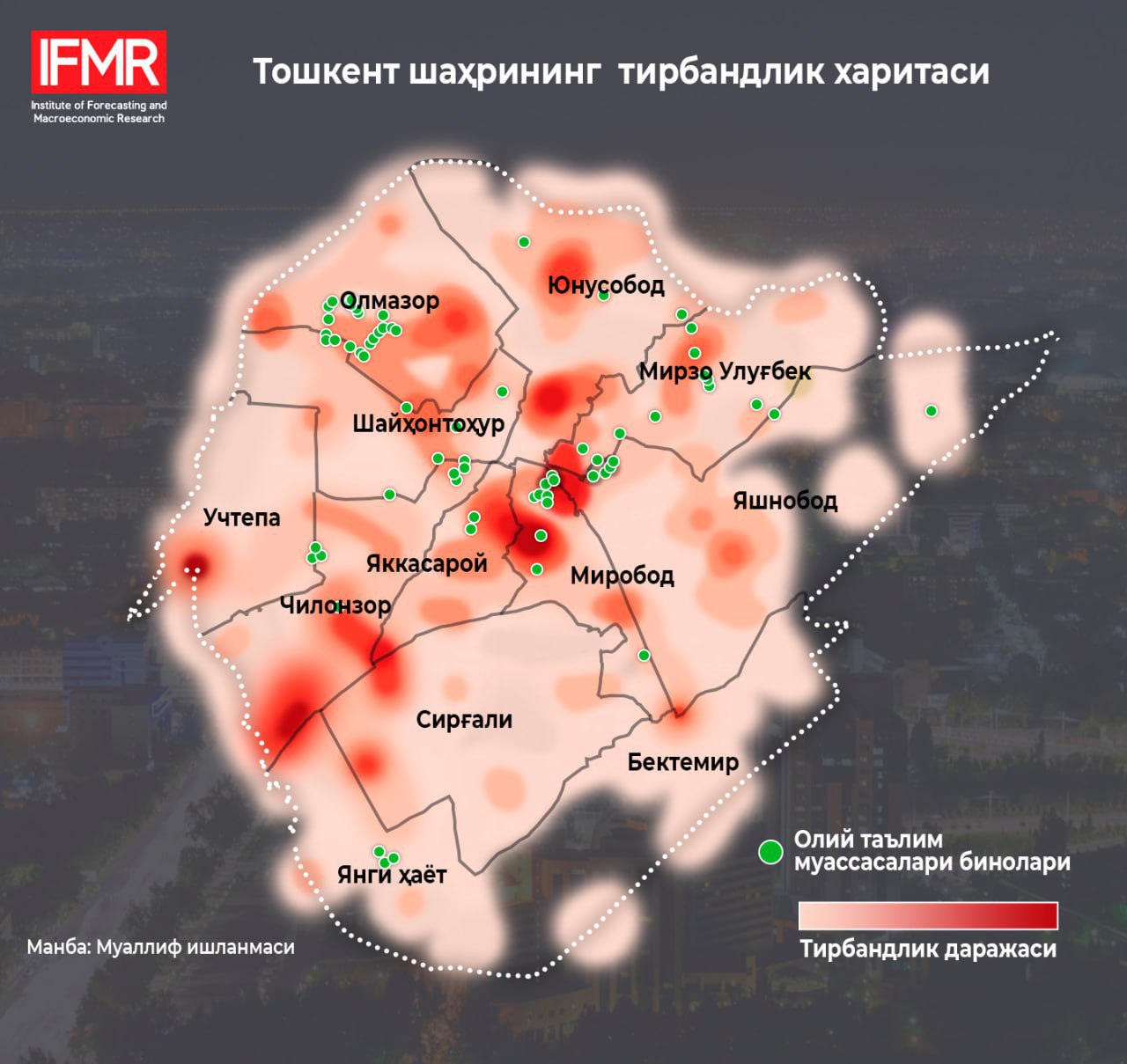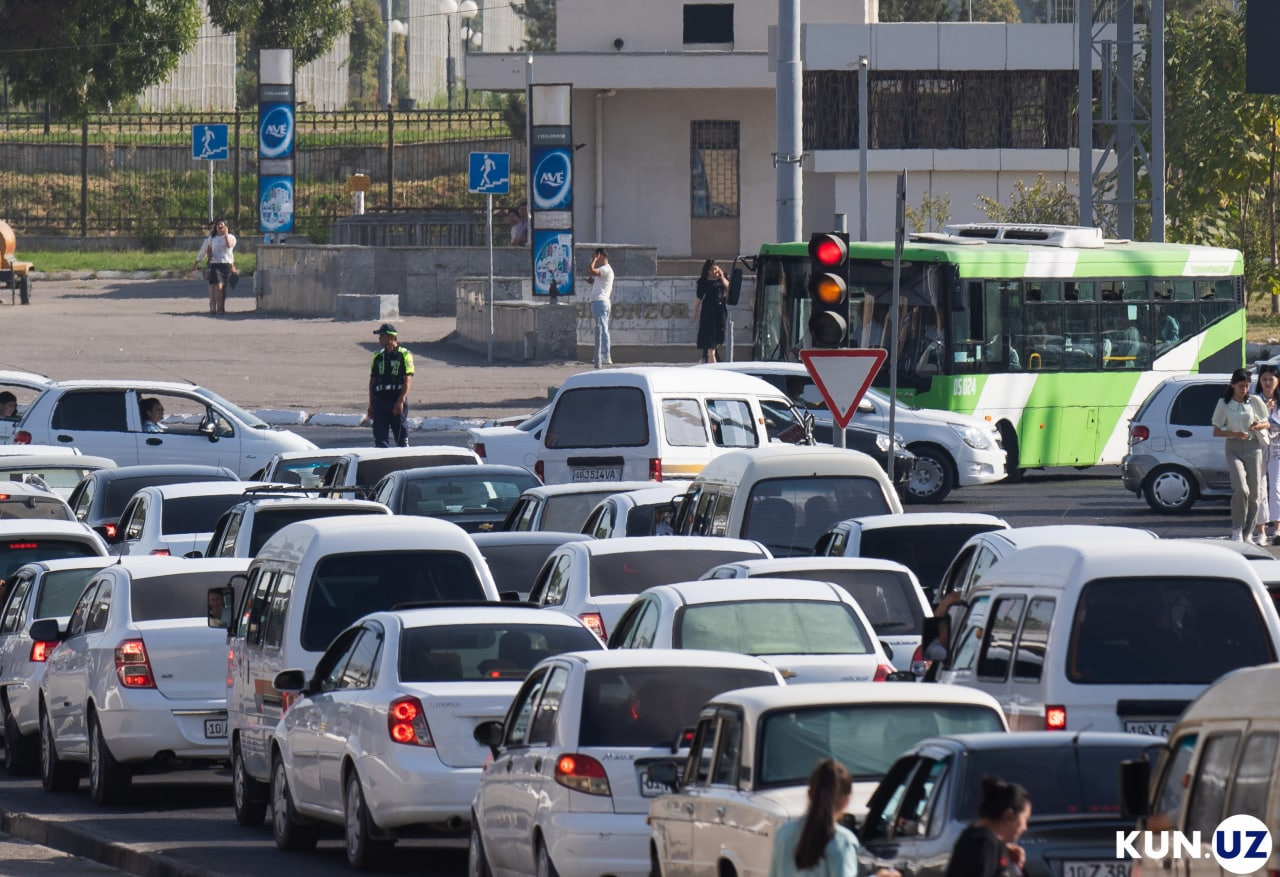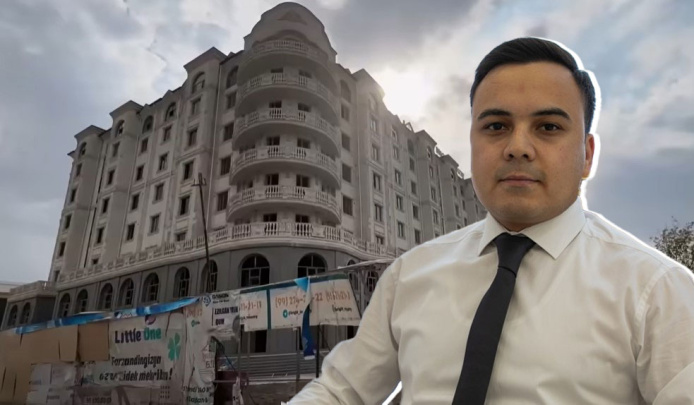Analysis of the experts of the Institute of Forecasting and Macroeconomic Research (IFMR) was published on how the location of higher education institutions affects the state of cities and the traffic problem.
Experts analyzed the level of congestion on the roads of Tashkent based on the average speed on the roads, the length of the traffic jams and the results of a social survey.
The research revealed:
• The total length of roads with high traffic in Tashkent city is more than 120 km. This is more than the distance from Tashkent to Gulistan (119 km).
• 43% of higher education institutions in the republic are located in Tashkent, and 34% of total students (354 thousand) study in the capital.
• 47% of respondents cited increased activity due to commuters as one of the top three causes of traffic congestion.
• The traffic of students during school hours will cause the length of extremely congested roads to increase from 8.5 km to 11.3 km.
• An additional 507 tons of CO2 is released into the atmosphere in a year due to increased traffic during the school year. This means planting an additional 19,031 trees or creating 53 hectares of green space.

The length of congested roads was determined using QGIS software, based on Quick Map Service data. On the traffic map, if the car moves at a speed of less than 10 km per hour, it will be represented in dark red, if it moves at a speed of 10-25 km per hour – red, if it moves at a speed of 25-45 km per hour – yellow, and if it moves at a speed of more than 45 km per hour – green. With this in mind, only red and dark red lanes were analyzed.
According to the IFMR, it is a common practice around the world to move universities outside the capital to reduce traffic congestion. For example, in 2012, in Moscow, until 2020, it was planned to build educational buildings of 5 major universities in the capital outside the Moscow Ring Road. At the global level, 9 of the 25 most prestigious higher education institutions in the QS World University Ranking are located in the capital. The remaining 16 were built outside the capital.
Experts also say that placing HEIs that train specialists in certain branches in areas specialized in that branch will ensure the integration of science, education and production.
“At the same time, the increase of service facilities around higher education institutions will have a multiplier effect on the economic development of the regions and will reduce the level of inter-regional stratification,” the IFMR experts recommended.






